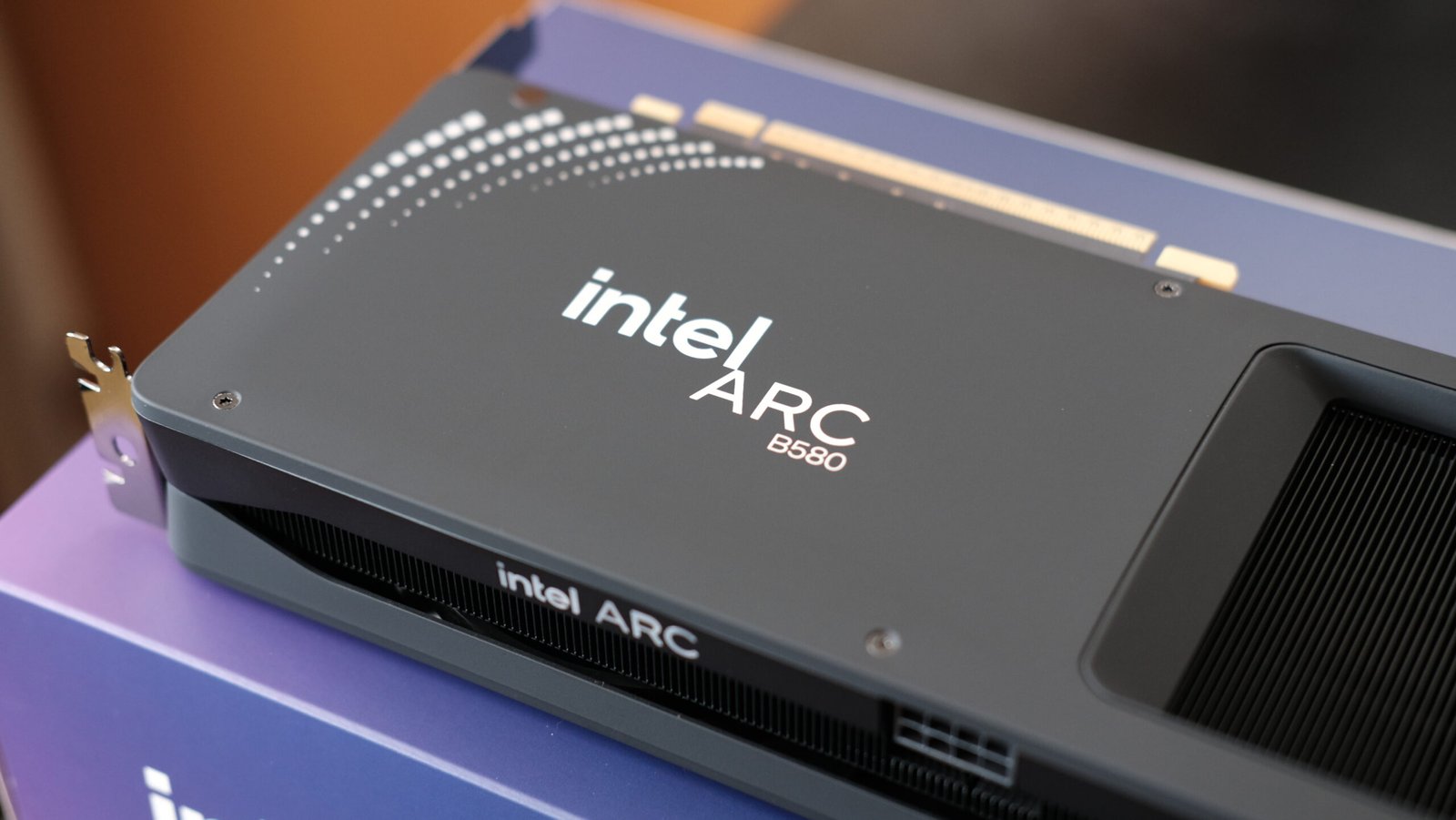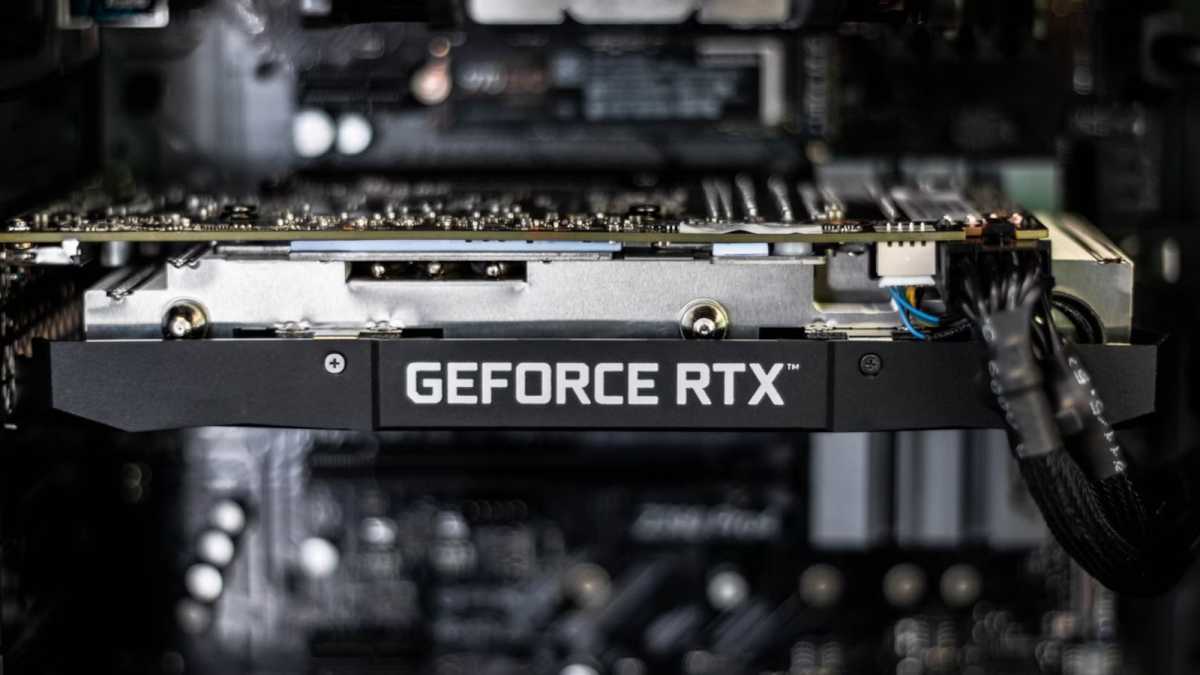Surprise! We woke up this morning to a blockbuster mashup between Intel and Nvidia. Team Green invested a cool $5 billion into Intel, and in exchange, the two companies will be co-creating consumer and data center x86 processors interwoven with Nvidia’s RTX graphics. Human sacrifice, dogs and cats living together… MASS HYSTERIA!
It’s simultaneously a shocking shakeup of the PC chip triumvirate (AMD must be fuming), a much-needed lifeline for struggling Intel, and a recipe for a potentially exciting future – the world’s foremost graphics pioneer joining forces with the company formerly known as Chipzilla. Imagine the possibilities!
But I also have to ask myself at the same time: What does this mean for the future of Arc, Intel’s own in-house graphics project?
Intel Arc’s short history shows promise…
Arc is still in its infancy. Intel famously canceled its early “Larrabee” graphics architecture in the 2000s, which became a liability after the rise of Bitcoin and AI demonstrated the powerful potential of GPUs. Intel realized it missed the boat and rushed – slowly, at times – to orchestrate both the Arc brand and the Xe graphics architecture girding it.
The first Arc graphics cards launched in just October 2022, delivering great value for its price despite an onslaught of annoying bugs. Intel diligently fixed those bugs over time, and by the time the second-gen Arc B580 launched in late 2024, we called it “the first worthy budget GPU of the decade.” And Arc’s underlying Xe graphics architecture now powers the integrated graphics in Intel’s CPUs too, bringing a notable spike in laptop gaming performance.
…but potentially shaky foundations
Software bugs aren’t the only problem that rears its head when you’re trying to break into a new field where Nvidia and AMD have a decades-long lead. Intel’s GPU hardware prowess isn’t up to par with its rivals yet either; this shows in the size of the discrete Arc GPU die sizes. Bigger dies are much more expensive to make. The $250 Arc B580’s die size is a relatively massive 292 mm. By contrast, Nvidia’s RTX 4060 was around 150 mm, while the RTX 5060 is around 181 mm.
That matters. Intel’s Tom Peterson (a frequent guest on our Full Nerd podcast!) admitted last year that the Arc B580 is a “loss leader” – a product that costs the manufacturer money to sell, in the hopes of attracting customers. Intel figured it was worth eating that loss to build for a stronger GPU future.
Intel’s partnership with Nvidia suddenly throws that into question, even though the company says no major changes are currently planned. “We’re not discussing specific roadmaps at this time, but the collaboration is complementary to Intel’s roadmap and Intel will continue to have GPU product offerings,” an Intel spokesperson told me.
Intel needs strong GPUs to battle Nvidia in the data center, because AI is where the real money is. The consumer Arc cards are stepping stones to that goal. Now Nvidia is investing $5 billion into Intel – roughly a 5 percent stake, if the recent government investment is any indicator — to integrate RTX graphics into at least some Intel consumer CPUs, and to create data center solutions that interweave Intel’s x86 chips and Nvidia’s class-leading graphics.
If a major investor is bringing GPU technology to Intel’s chips, spanning from consumer to enterprise, and gifting Intel a lifeline in the data center where AMD has been eating Intel’s lunch. Is Arc worth investing in separately anymore?
Intel Arc’s certain yet uncertain future
From a strategic standpoint, there’s certainly a case to keep Arc around. What if the Nvidia relationship suddenly goes sour despite the big money? The company is known to be a ruthless partner. Keeping Arc and Xe in motion protects against a potential future where Nvidia pulls the rug out from underneath Intel, especially since Xe (and seemingly this Nvidia partnership) touches everything from laptops to data center GPUs. Continued investment into internal GPUs makes so much sense for Intel’s future.
But I’m not sure that’s what’s going to happen. Bright futures have a way of bumping into ugly realities.
Part of the reason this Intel-Nvidia mashup even happened is because Intel lost its manufacturing lead and has been hemorrhaging cash (and CEOs) ever since. Nvidia’s deal follows in the footsteps of the U.S. government taking a 10 percent stake in the company to help it stay afloat, and Intel selling off subsidiaries like RealSense cameras and Altera’s FPGA chips.
Intel is scrambling to stay relevant, and Nvidia’s partnership is a major shot in the arm – not least by likely infusing Intel’s beleaguered 14A process, the current crown jewel of Intel’s foundry arm, with work from Nvidia and other companies inspired by Nvidia’s faith.
Either way, don’t expect major announcements from Intel any time in the near future.
“I don’t expect these platforms for 2-3 years,” Patrick Moorhead, an analyst who founded Moor Insights & Strategy and formerly served as an AMD executive, told me via direct message. “Both companies said there are no roadmap changes… on either side.
“Now… what will the demand be for Arc be once these are in market by customers remains to be seen.”
Xe and Arc have driven much-needed competition in the entry-level graphics card market this turbulent decade. I hope they manage to stick around. If not, Nvidia’s $5 billion investment could not only get the company a foothold in the x86 markets, but also drive a competitor out of the market. If that happens, that sky-high price tag will wind up looking like a downright bargain in the rearview mirror.
In the meantime, the Intel Arc B580 remains the best budget GPU of the decade.
This articles is written by : Nermeen Nabil Khear Abdelmalak
All rights reserved to : USAGOLDMIES . www.usagoldmines.com
You can Enjoy surfing our website categories and read more content in many fields you may like .
Why USAGoldMines ?
USAGoldMines is a comprehensive website offering the latest in financial, crypto, and technical news. With specialized sections for each category, it provides readers with up-to-date market insights, investment trends, and technological advancements, making it a valuable resource for investors and enthusiasts in the fast-paced financial world.

